21 Useful Things You Need to Know About Death Valley National Park
Once home to the Timbisha Shoshone tribe, miners and even a few outlaws, Death Valley – in the Mojave Desert – is a unique national park. Hot, dry and spread out – it’s a part of extremes. All of these unique characteristics make it kind of tricky to visit.
After a few failed attempts, due to weather and other things, I finally got the chance to visit but didn’t realize just how hot it would still be in October. Laying in my tent feeling like a pizza on a pizza stone at 2 am I thoroughly questioned my decision.
I’ve been back to Death Valley a few times now but that experience – and wanting to help others be as prepared as they can be – prompted me to come up with a list of what I think are some of the most helpful things you need to know about Death Valley National Park. That way there won’t be any surprises – or camping mistakes – when you go.
This post contains affiliate links. That means I may earn a commission, at no cost to you, if you book or buy something from a link I share. This keeps Southerner Says online and on the road. Thank you for your support.
What You Need to Know About Death Valley
I’m sure there are plenty of other things that you need to know about Death Valley – feel free to leave them in the comments – but for me these are some of the most important.
1. It’s Big
Straddling the California–Nevada border, Death Valley National Park covers a massive 3.4 million acres – roughly 3,000 square miles – making it the largest national park in the lower 48 states. For perspective, Yellowstone is about 2 million acres (already larger than Delaware and Rhode Island combined), yet Death Valley dwarfs even that. It’s so big that seeing everything would take months.
Because of its size, having a plan is essential. Without an itinerary, it’s easy to spend hours driving in the wrong direction or miss major sights altogether. Being strategic – both how you explore and when you visit – makes a huge difference.
One thing that makes navigating the park a bit easier is the major junctions that break up the park. These points – where roads meet or branch off – each correspond with a significant landmark or attraction, which helps travelers orient themselves.
For example, Furnace Creek Junction is the park’s central hub. Here you’ll find the Furnace Creek Visitor Center, two of the park’s hotels and several campgrounds. Other helpful reference points include Stovepipe Wells Junction, Badwater Road Junction, and Beatty Cutoff Junction. Getting familiar with these areas will save time and make getting around easier.
2. It’s a Fee Based Park
Even though Death Valley National Park doesn’t have traditional ranger entrance stations, it’s still a fee-based park. Instead of staffed booths, you’ll find self-pay kiosks with credit-card machines (no cash accepted) placed at key points around the park and along the main highways leading in.
The current entrance fees are:
- $30 per vehicle for a 7-day pass
- $25 for motorcycles
- $55 for a Death Valley–only annual pass
For most visitors, the best value is the America the Beautiful Annual Park Pass – also available at the kiosks. For $80, it covers entry for an entire year to more than 2,000 federal recreation sites, including National Parks, Forest Service lands, BLM areas, and more. If you visit even three or four parks a year, this pass easily pays for itself.
3. Death Valley Isn’t Only in California
Most people think of Death Valley as entirely a California national park – and most of it is – but a small portion actually extends into Nevada, covering about 110,000 acres. If you want to explore the Nevada side more intentionally, then add a stop at Ash Meadows National Wildlife Refuge, located just outside the park boundary.
Managed by the U.S. Fish and Wildlife Service in collaboration with the National Park Service, Ash Meadows protects a rare desert oasis that’s home to four endangered fish species (including the Amargosa pupfish) and several threatened or endangered plants.
You won’t find pupfish just anywhere in Death Valley, but Ash Meadows offers one of the best opportunities to see these unique species on public land. The accessible boardwalks at Ash Meados, such as the one at Point of Rocks or Kings Pool is another good place to look.
4. It’s the Lowest Place in North America
Badwater Basin in Death Valley National Park holds the title of the lowest point in North America, sitting at 282 feet (86 meters) below sea level. Visiting the basin and walking among its shimmering salt flats is one of the most iconic – and most popular – things to do in Death Valley.
There’s a boardwalk and viewing platform near the parking area, but for the full experience, it’s worth walking out onto the flats. As you go, you’ll notice the salt forms hexagons shapes. These patterns aren’t man-made – they form naturally as groundwater evaporates, causing the salty crust to dry, crack and push upward.
The repeated cycles of evaporation, expansion and contraction create the distinctive shapes, which become more defined the farther you walk from the boardwalk. The result is an otherworldly, ethereal scene with far fewer people around and especially beautiful at sunset.
5. It’s the Hottest Place in North America
Death Valley also holds the record for the highest reliably recorded air temperature on Earth: a blistering 134°F (56.7°C) on July 10, 1913, at Furnace Creek, where the park’s official thermometer is located. Make sure you take the time to stop by and see it.
The extreme heat in Death Valley is due to several factors: low elevation, a dry desert climate and lack of vegetation. These conditions make summer visits particularly challenging, so it’s important to take precautions, stay hydrated and plan your activities for cooler parts of the day.
Because there are almost no trees in the park, don’t expect any natural shade for breaks from the heat – you’ll need to head to higher elevations, like Dante’s View or to the Telescope Peak area, where temperatures are cooler and occasional natural shade from rock formations or sparse trees is available.
6. It Has Multiple Entrances
Since Death Valley National Park spans both California and Nevada, there are several ways to enter the park, each offering its own scenic highlights.
From California:
- Highway 395 North to Ridgecrest, then State Route 178 is one option.
- Another favorite is Highway 395 North to Olancha, then Highway 190. This route passes Father Crowley Vista Point – one of my favorite areas of the park – and winds through mountainous terrain before reaching Panamint Springs, offering some of the most amazing views.
From Nevada (Las Vegas area):
- The drive to Furnace Creek Visitor Center is about 124 miles. A convenient route is Nevada Highway 160 to Pahrump, then Death Valley Junction and Highway 190 into the park. This approach is ideal for making a loop – enter from this side and exit via Highway 374 to Beatty, Nevada – aka the gateway to Death Valley – perfect if you’re returning to Las Vegas.
Tips for Planning What Entrance to Use:
- Furnace Creek area: Best accessed from either California (Highway 190) or Nevada (via Death Valley Junction) if your focus is on visitor centers, hotels, and Badwater Basin.
- Dante’s View, Zabriskie Point, and Artist’s Drive: Easier to reach from the east (Nevada side) or Highway 190 coming from California.
- Mesquite Flat Sand Dunes: Most convenient from Stovepipe Wells entrance on Highway 190.
Choosing the right entrance can save time, reduce backtracking and ensure you hit the attractions most important to your trip.
7. There Are a Lot of Unpaved Roads
Death Valley National Park has over 1,400 miles of roads, and many are unpaved or gravel, the majority are well-maintained and accessible to regular cars especially the ones to popular places in the park.
More remote backcountry routes – like Titus Canyon – require a high clearance or 4-wheel-drive vehicle. If you want to explore these rugged areas safely and don’t have the right kind of vehicle, consider renting a Jeep at Furnace Creek.
A map is so important for navigating both paved and unpaved roads. You can pick one up at the entrance kiosks or download the park visitor guide and map from nps.gov before your visit. The National Park Service also provides detailed backcountry road and dispersed camping map.
Frequent visitors may want a more detailed option, such as this National Geographic Death Valley map, for guidance on roads, trails and points of interest. For more tips and safety advice on navigating the park’s roads, check out my full guide: Tips for Driving in Death Valley National Park.
8. Your Car Needs to Be Death Valley Ready
Given the remoteness of Death Valley and its extreme temperatures, having a reliable vehicle is essential. Breakdowns in the park can quickly turn dangerous, as help may be hours away and cell service is often limited. An emergency kit with food and – it can’t be said enough – plenty of water is imperative.
Heat is hard on vehicles. Before your trip, check key systems such as tires, fluids, cooling system and the battery. Make sure your spare tire is in good condition and you have all of the tools needed to change a flat. Also useful is a battery jump box (ideally one that can also inflate a tire) and Fix-a-Flat – all things that help avoid a costly tow bill.
For a more thorough pre-trip vehicle checklist, including tips for preparing your car for extreme conditions like those in Death Valley, check out my full guide: Things to Check Before a Road Trip. Also, keep a close eye on your fuel level, as gas stations are few and far between. A fully fueled vehicle is crucial for a stress-free visit.
9. Cell Service is Not Reliable
One of the most important things to know about Death Valley National Park is that cellular service is limited and often unreliable. Coverage varies by provider – personally, I have Verizon and rarely get a signal anywhere in the park, while my daughter with AT&T tends to have slightly better coverage in some areas.
If you plan to explore backcountry or 4×4-only roads, relying on your cell phone can be risky. For safety, consider investing in a satellite communicator. Devices like the Garmin inReach or the Zoleo satellite messenger allow you to send texts and emails even when you’re completely out of cell range. They can provide peace of mind and a safety lifeline in remote areas.
10. GPS Might Not Be Accurate
While most of us rely heavily on GPS these days, Death Valley is one place where it can’t be trusted completely. The National Park Service specifically warns that GPS devices and smartphone navigation can sometimes lead you to dead ends, closed roads or routes that aren’t suitable for regular cars or rental vehicles.
Some backcountry roads are extremely narrow, unpaved, or require 4-wheel drive, so blindly following GPS directions can put you in a dangerous situation.
The safest way to navigate the park is with a physical park map and a basic understanding of the road legends. For more detailed navigation, consider a high-quality topographic or backcountry map, such as the National Geographic Death Valley map, which shows paved roads, unpaved routes, and points of interest in detail.
Even if you use GPS as a backup, always double-check routes on a map before heading out and taking just any road, especially when venturing into remote or less-traveled areas. A little preparation goes a long way in keeping you safe.
11. The Best Time to Visit Death Valley
Death Valley National Park is open year-round, but the best time to visit depends on what you want to do and your tolerance for heat. For hiking and exploring in moderate temperatures, the cooler winter months – December through March – are ideal.
Spring can also be a great time to visit, especially if you want to see the park’s famous wildflower blooms. Early April and even early May often offer pleasant temperatures, while late May, including the Memorial Day weekend, can already bring the heat. Timing your spring visit just right allows you to enjoy the blooms and milder weather before summer temperatures rise.
Summer months, from May through October, bring extreme heat, with temperatures often exceeding 130°F (54°C). Visiting during this time is possible, but you’ll need to take extra precautions: plan early-morning activities, carry plenty of water, wear sun protection and be prepared for sudden changes in conditions.
Fall, including October, can still be surprisingly warm – as I discovered while camping – days may be moderate, but afternoons and even nights can remind you that Death Valley is still a desert of extremes. Late fall can be a great compromise: fewer crowds and cooler weather, though it’s still wise to plan for heat.
12. Death Valley is a Dark Sky Park
Located in an exceptionally remote region far away from major cities, Death Valley has minimal light pollution, offering some of the most unobstructed views of the night sky in the country. This makes it a prime destination for stargazing and astrophotography, that’s earned the park the designation of a Dark Sky Park.
If you want the best stargazing conditions, check the moon cycle before your visit. Full moons can wash out the stars, as I learned firsthand, while new moons offer the darkest skies and the most spectacular views. The National Park Service provides tips on how to make the most of a Dark Sky experience and hosts a Dark Sky Festival each year but always check with rangers for current events.
Some of the best spots to stargaze in the park include Mesquite Flat Sand Dunes, Harmony Borax Works, and Badwater Basin – all of which provide wide, open views of the sky with minimal foreground obstruction but honestly anywhere is pretty good viewing.
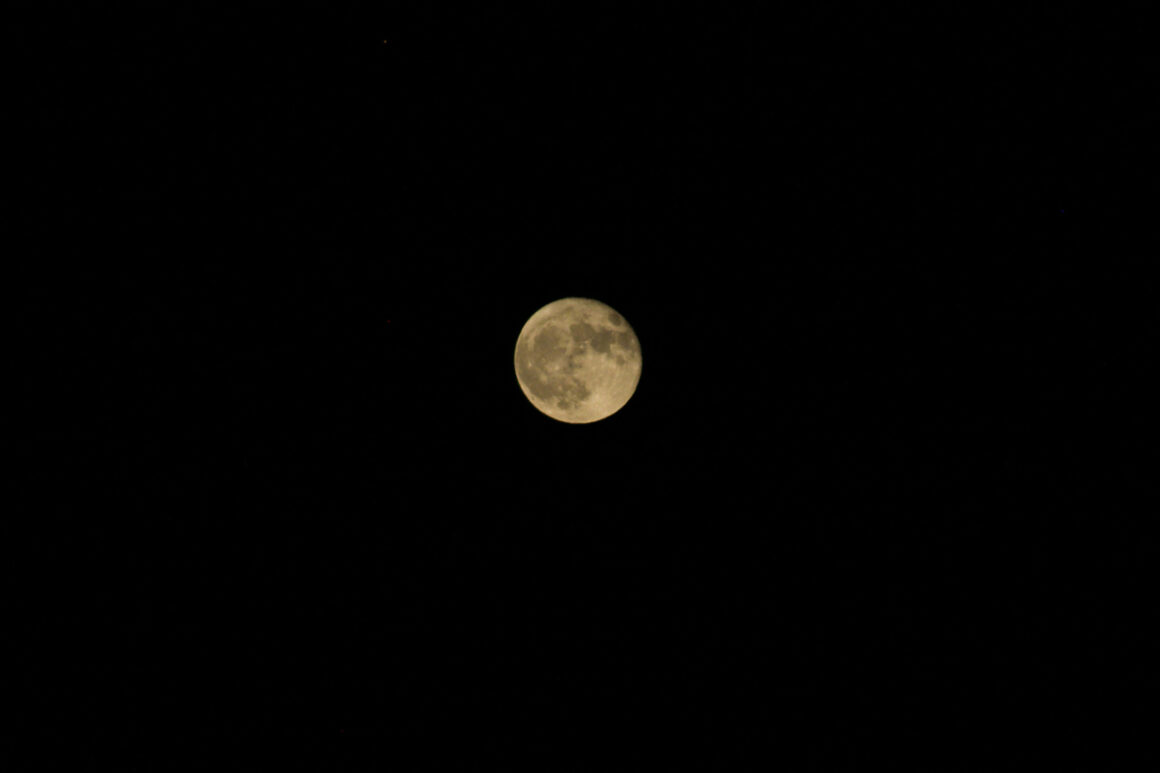
13. There’s One Visitor Center Open
Although Death Valley National Park has two visitor centers – Furnace Creek and Scotty’s Castle – only Furnace Creek is currently open. Scotty’s Castle Visitor Center has been closed since 2015 after severe flooding damaged the surrounding roads. The National Park Service hasn’t announced a reopening date, though limited tours over the past few years are a promising sign.
The Furnace Creek Visitor Center is open daily from 8 a.m. to 5 p.m. local time and is home to the park’s famous thermometer. In addition to providing educational exhibits and park information, you can watch an 18 minute park film – that’s one way to beat the heat – get your National Park Passport stamped and speak with rangers to answer any questions about your visit.
14. Where to Stay in Death Valley
Because Death Valley National Park is so big, it’s best to stay inside the park or as close as possible to minimize driving. Accommodation options include hotels, developed campgrounds, or backcountry/dispersed camping.
Hotels:
- The Oasis at Death Valley is the historic area near Furnace Creek and offers two options: the upscale Inn at Death Valley or the more casual, family-friendly Ranch at Death Valley.
- Stovepipe Wells Village offers a hotel, restaurant and saloon, gas station, and general store – perfect for picking up essentials like ice.
Camping:
- The park features nine developed and primitive campgrounds. Some, like Furnace Creek Campground, are managed by the National Park Service and open year-round.
- Other campgrounds are operated by concessionaires or privately owned; reservations can be made at Recreation.gov.
- For backcountry camping use this handy Backcountry Camping Map & Rules to make your plans before you head out.
Whether you prefer a hotel stay or camping under the stars, planning your accommodations inside the park or nearby will help you make the most of your visit.
Southerner Says: Check nps.gov for campground rules. Some are first-come first-served campgrounds all year long and others, like the Furnace Creek Campground, switch to first-come first-served during the low season. For more national park camping info read my Tips for Camping in a National Park and if you are intimidated about camping without a reservation then checkout this First-Come First-Served article too.
15. There Are Easy Hikes
Death Valley National Park has a surprising number of easy and moderate hikes, many of them suitable for all experience levels. The key factor is when you go – time of year and time of day make all the difference.
Some of the easiest and most accessible trails include Badwater Basin, Zabriskie Point, Ubehebe Crater (as long as you skip descending into the crater), Dante’s Peak and Mesquite Flat Sand Dunes. The dunes are especially beautiful at sunrise and can be manageable even in warmer months if you start early.
No matter which trail you choose, always prioritize safety in the hot, dry desert environment. Carry more water than you think you need, wear sunscreen and protect yourself with a hat and sunglasses. Even the “easy” hikes feel harder in Death Valley’s conditions
16. Pets Are Welcome – With Restrictions
Pets are allowed in Death Valley National Park, but there are several important rules to keep in mind. Dogs must always be on a leash and never left unattended, especially inside vehicles – the desert temperatures can become dangerous in minutes.
Dogs are not allowed on hiking trails or on boardwalks in natural areas, including places like Badwater Basin. However, you can take them in developed areas such as paved and unpaved roads, parking lots, campgrounds and outdoor spaces around federal buildings, including the visitor center. (As always, legitimate service animals are exempt from these restrictions.)
If you bring your dog into the park, stay alert for wildlife, which can appear even in developed areas. And if you’re unsure where pets are permitted, the National Park Service provides a helpful page with guidelines and a list of pet-friendly areas within the park.
17. You Can Gas Up in the Park
With a park this large, you’ll be happy to know you don’t have to worry too much about keeping your gas tank full. Death Valley has three gas stations – Furnace Creek, Stovepipe Wells and Panamint Springs. At Furnace Creek, you can even use a credit card at the pump when the store is closed.
Just keep in mind that fuel prices inside the park are noticeably higher than in surrounding towns due to its remote location. So it’s smart to top off before entering the park.
EV drivers aren’t left out, either. The Oasis at Death Valley (both the Inn and the Ranch) has Level 2 charging stations available for guests, although charging can take time and there are no fast chargers in the park. The National Park Service also advises against using campground electrical pedestals for EV charging.
Still, with stations available, don’t let your tank – or battery run low. Distances are long, and it’s easy to underestimate how far it is between stops.
18. Services in the Park Are Limited
Even though there’s fuel and a general store in the park, one of the most important things you need to know about Death Valley National Park is that supplies and services are sparse. There are only a few locations where you can find food, drinks and other limited supplies.
The main spots are Furnace Creek, Stovepipe Wells and Panamint Springs have limited hours, especially outside of peak season. Since there isn’t much available in the park, it’s smart to stock up on snacks, extra water and any essentials before entering. Don’t assume you’ll find anything along back roads – many areas are completely undeveloped and only have small markets.
Southerner Says: I found that – understandably – ice melts quickly in Death Valley. If you’re visiting during the hotter months, consider bringing two coolers. Use one cooler just for ice and try to open it as little as possible so the ice lasts longer. Keep your food and drinks in the second cooler, and as the ice in that one melts, you can transfer more from the “ice-only” cooler to keep everything cold.
19. It Rains in Death Valley
Despite its reputation as the driest place in North America, Death Valley dies gets rain – and sometimes a lot of it. The last couple of years have proved that point well: both 2023 and 2024 were unusually wet, with storms washing out roads and even reviving Lake Manly, a temporary lake that hadn’t appeared at that scale in decades.
Because storms can develop quickly, it’s essential to check the forecast, monitor park alerts, or ask a ranger about current conditions before exploring. In the desert, washes, slot canyons and even low-lying roadways can flood rapidly, sometimes miles away from where the rain actually falls.
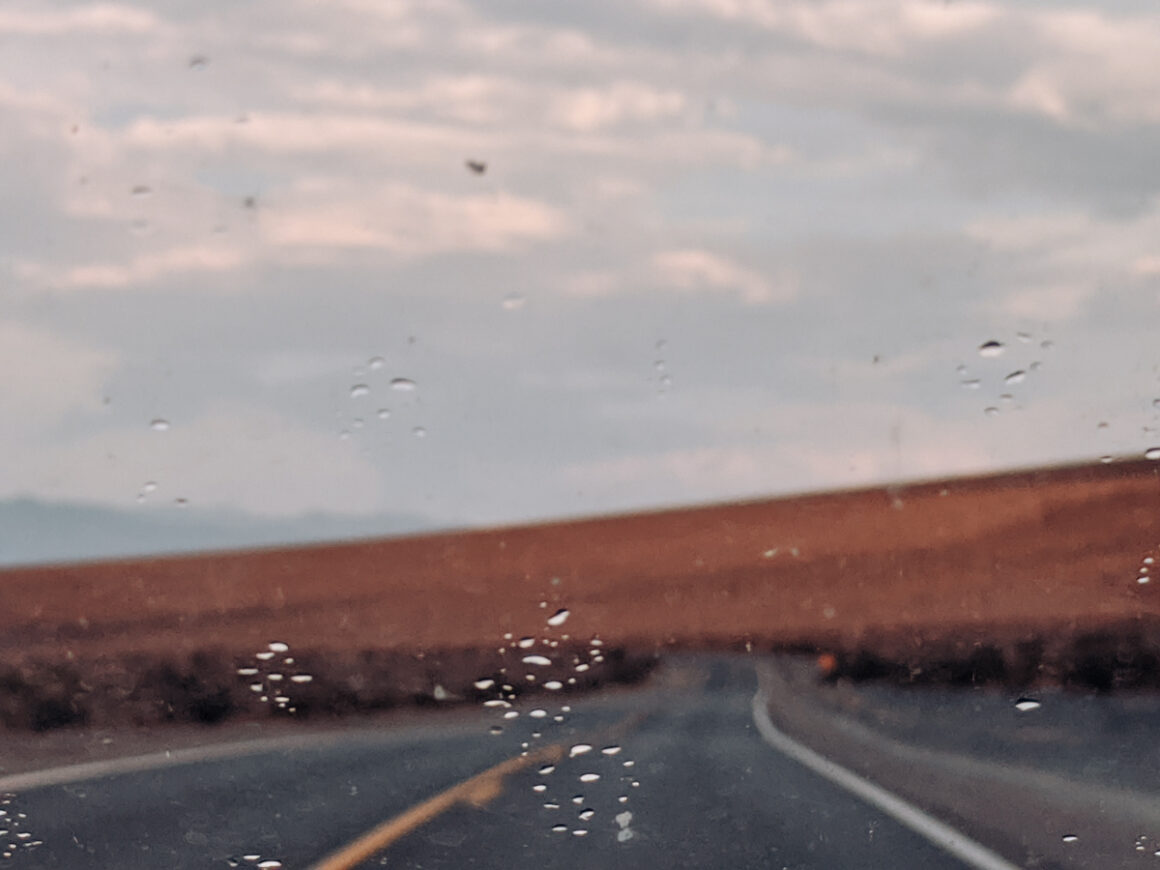
20. It’s Easy to Visit From Las Vegas
While you could easily spend days – or even weeks – exploring Death Valley National Park, it also makes an excellent day trip from Las Vegas. From southern Las Vegas, the drive along Highway 160 through Pahrump through the Humboldt–Toiyabe National Forest is incredibly scenic before reaching Death Valley Junction and Highway 190.
One day isn’t much time for a park this massive, but you can hit several highlights without feeling too rushed. Popular stops for a day trip include Dante’s View, Badwater Basin, Devil’s Golf Course, 20 Mule Team Canyon and Artist’s Drive. If time and temperature allow, you can also swing by the Furnace Creek Visitor Center and even walk out onto the Mesquite Flat Sand Dunes.
If you get started early, with good planning – and plenty of water – a day trip to Death Valley from Las Vegas offers a completely different experience from the Vegas Strip.
21. How Death Valley Got its Name
This may not be the most important thing to know before visiting, but it’s definitely one of the most common questions: how did Death Valley get its ominous name?
The story goes back to the winter of 1849 –1850, when a group of pioneers – later known as the ’49ers – became lost while trying to find a shortcut to California’s gold fields. Stranded for months in the valley’s brutal conditions, they struggled to find food and water and were convinced they wouldn’t make it out alive.
When the group was finally rescued and began their climb out of the valley, one member turned back and said, “Goodbye, Death Valley.” And the name stuck.
More Death Valley National Park Tips
You can never be too prepared when visiting Death Valley National Park – the more resources and tips you have, the better.
- Grab a guidebook: The Death Valley National Park by Moon guide is an excellent resource, packed with insider tips and detailed information.
- Use a map: Grab a National Park Service map of Death Valley at the Visitor Center for navigation and planning or download here.
- Use the official app: Download the NPS app for self-guided tours, updates and other park information.
- Follow Leave No Trace principles: Protect the park and all public by leaving them better than you found them.
- Check park alerts before you go: Always visit the NPS website for the latest alerts, road closures and safety updates.
Final Thought About About Death Valley National Park
There’s no way to cover everything you need to know about Death Valley National Park in a single article – it’s just too much. But the tips here highlight some of the most helpful things for visitors, giving you a solid starting point to plan your adventure.
Take your time, stay prepared and focus on exploring the park’s main sights and accessible areas safely. With a little planning, you’ll be able to experience the unique landscapes and unforgettable features that make Death Valley truly one-of-a-kind.

Author: Lori Blalock
A girl raised in the South, Lori is the founder of Southerner Says and a travel advisor with over 100,000 miles of solo road trip experience. Passionate about public lands, sunsets, and good barbecue, she writes about and helps others plan memorable getaways across the U.S., Mexico and the Caribbean. When she’s not on the road, she’s living life back home in Georgia


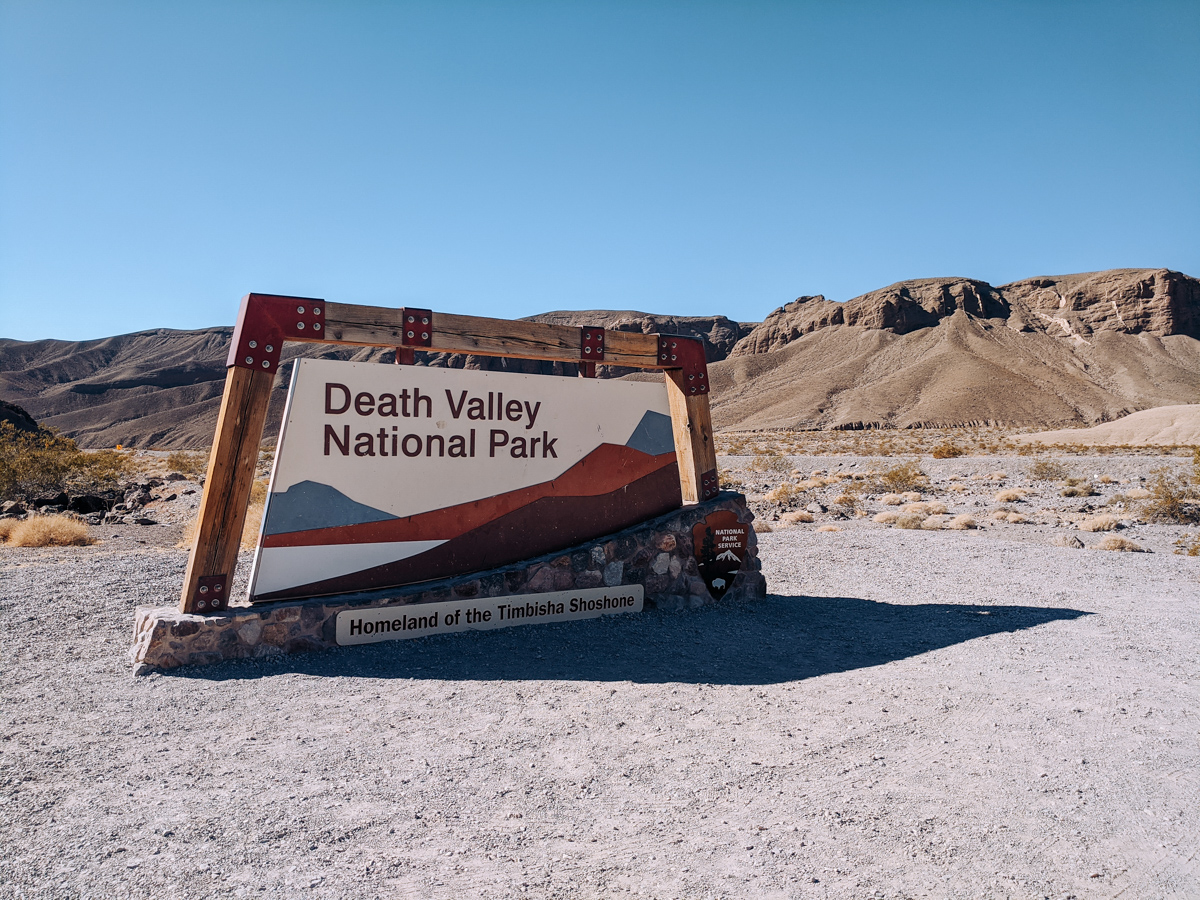
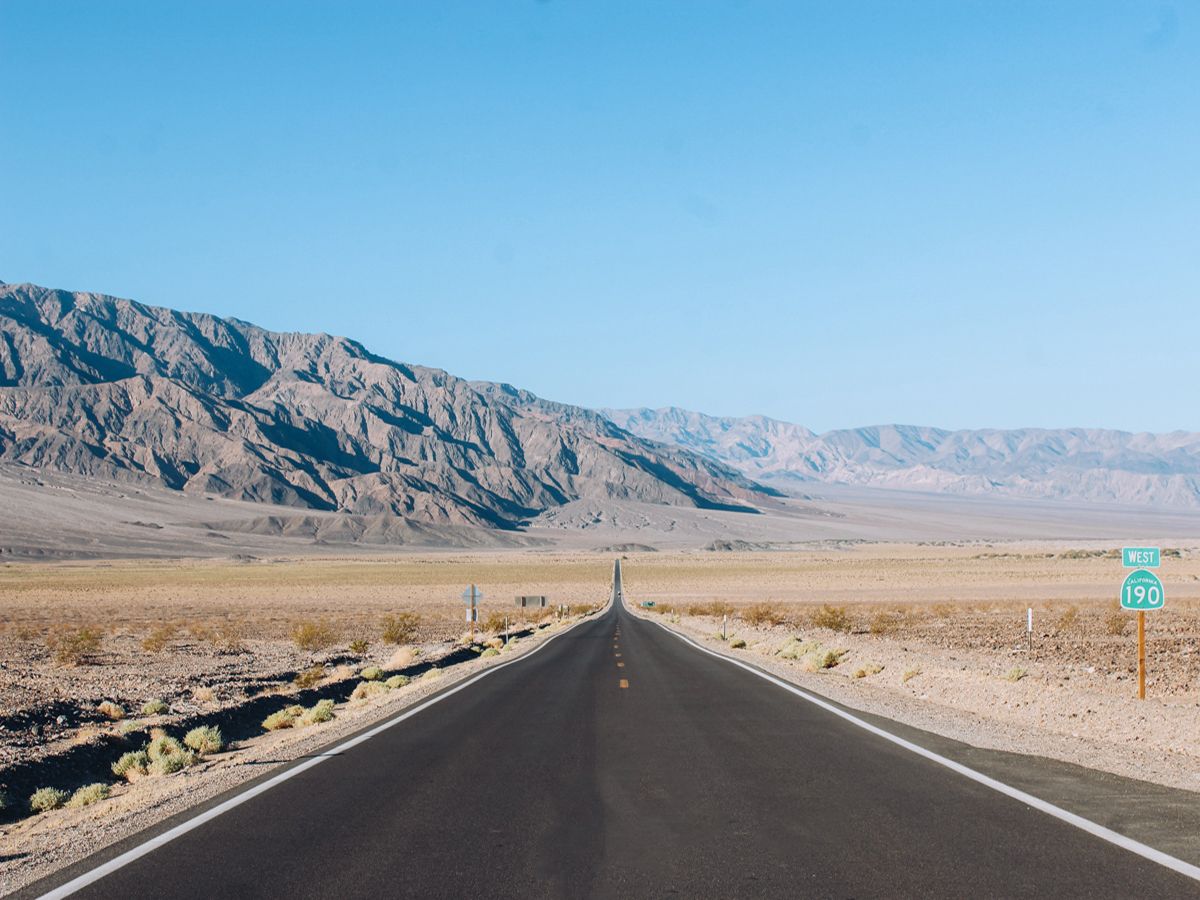
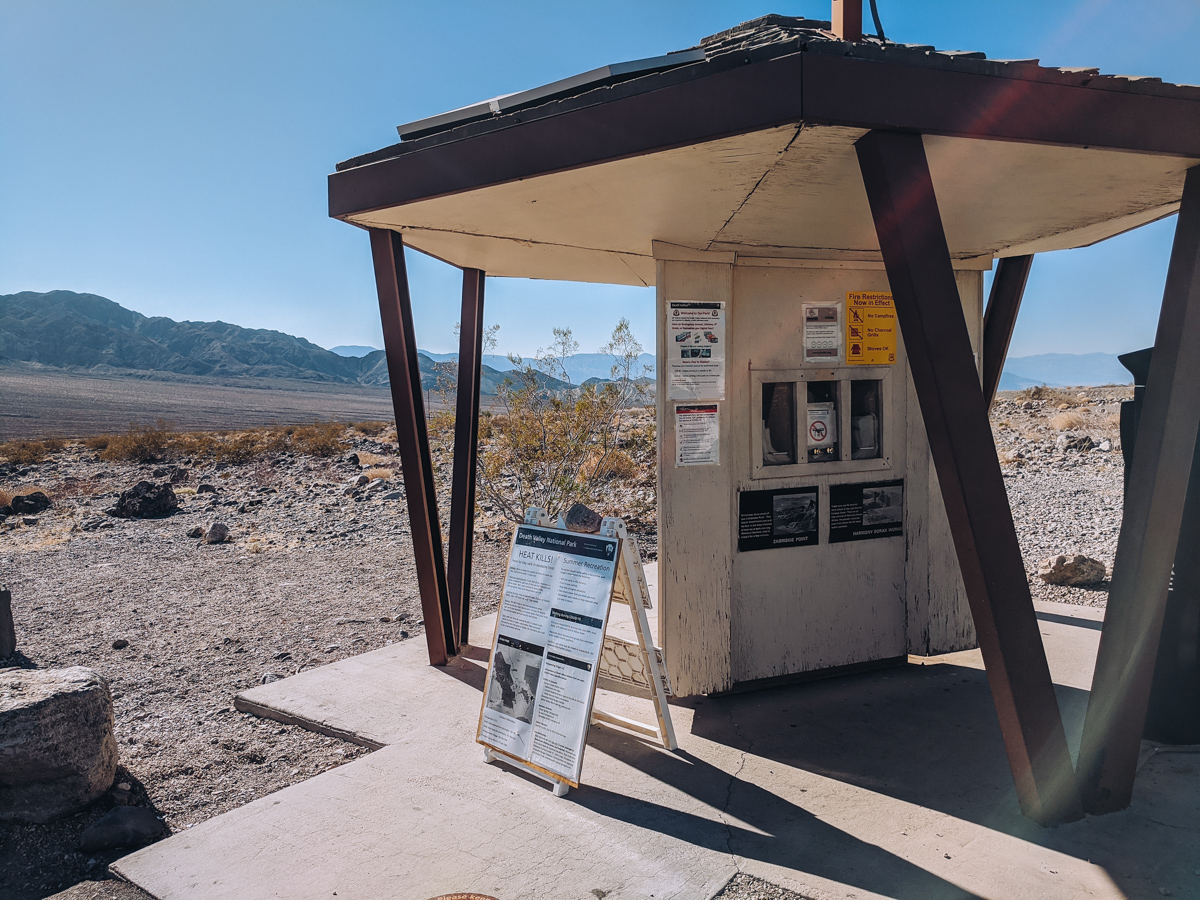




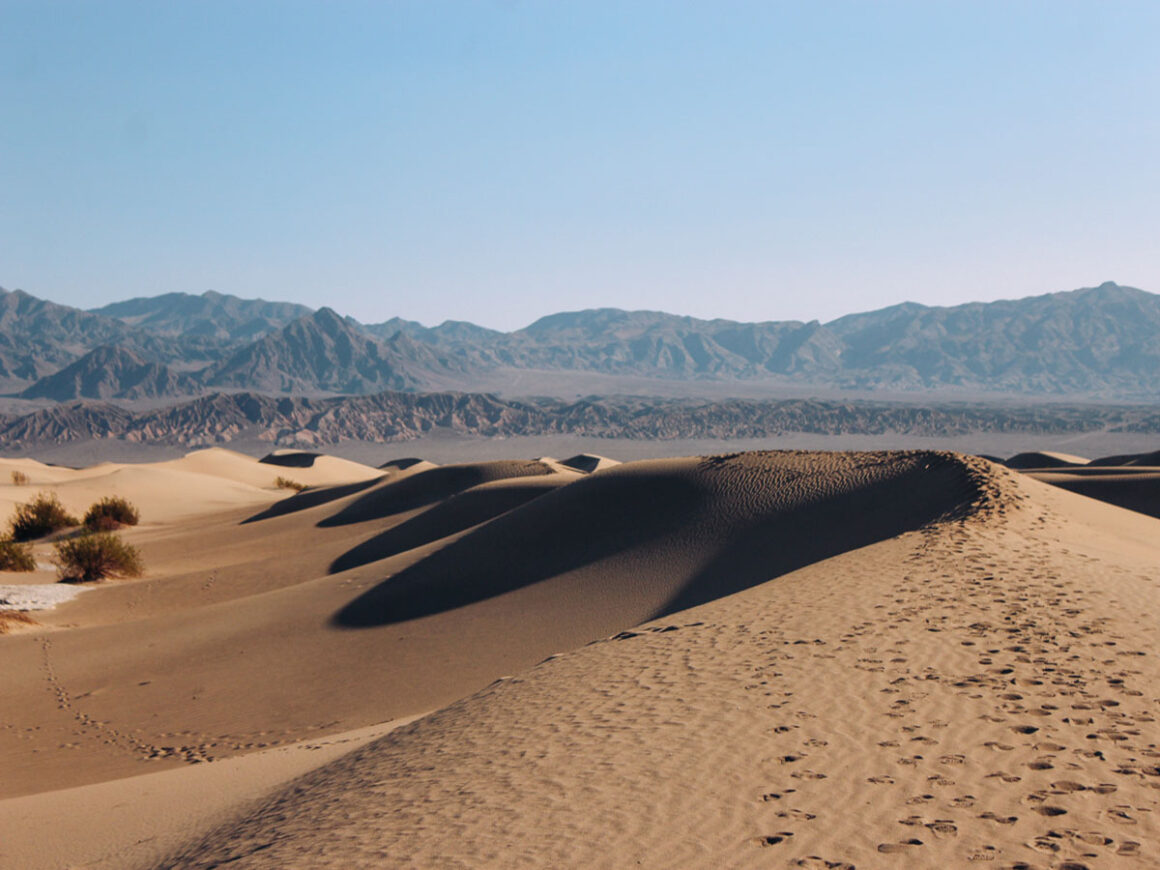

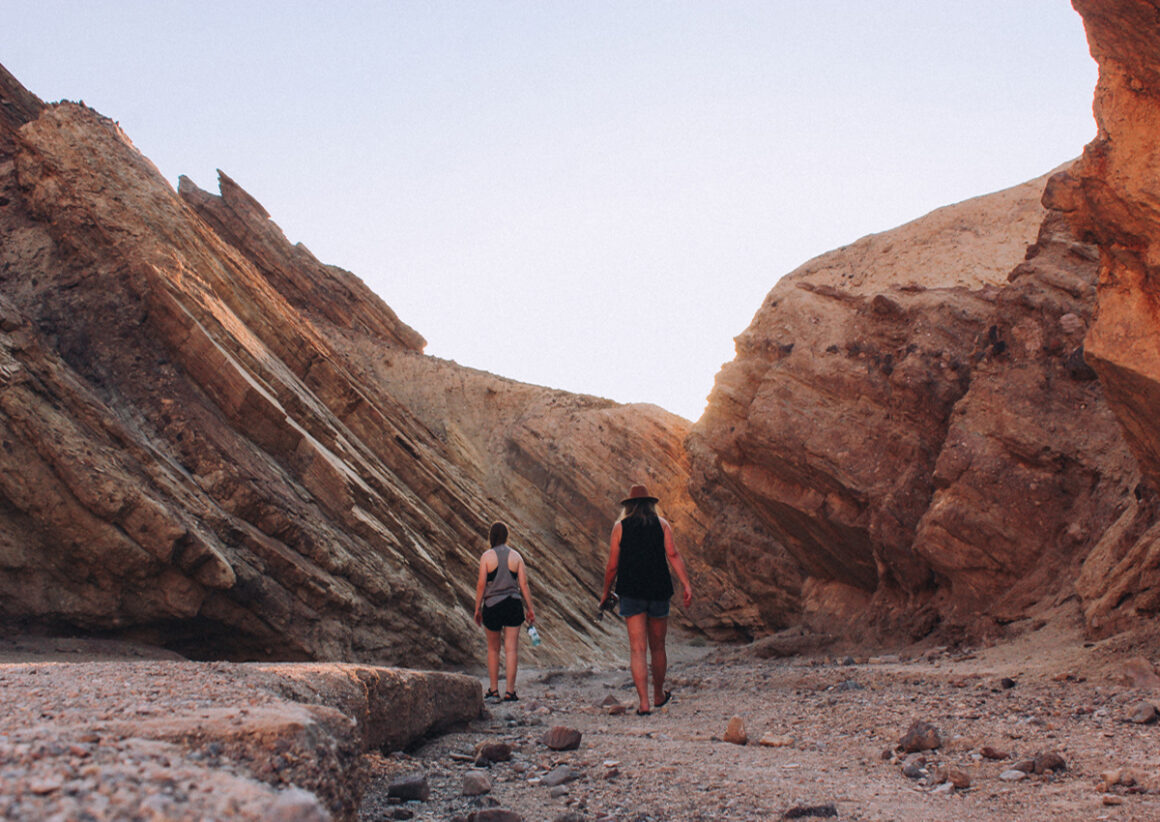




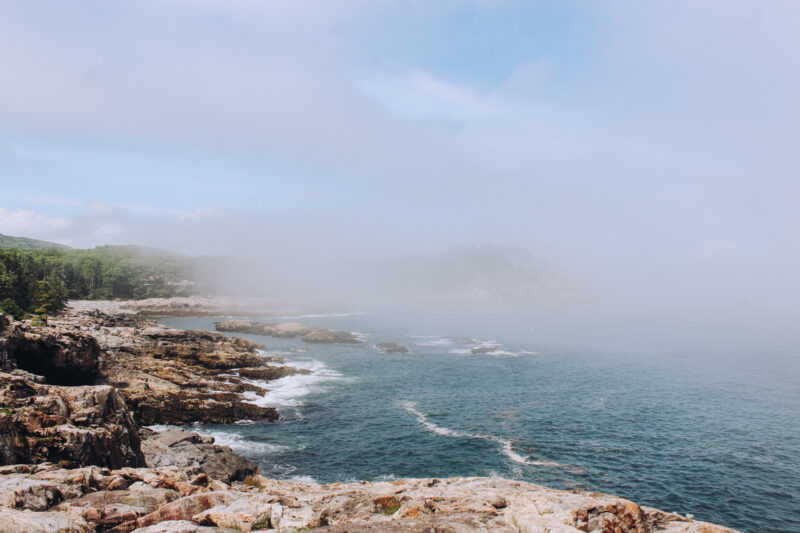
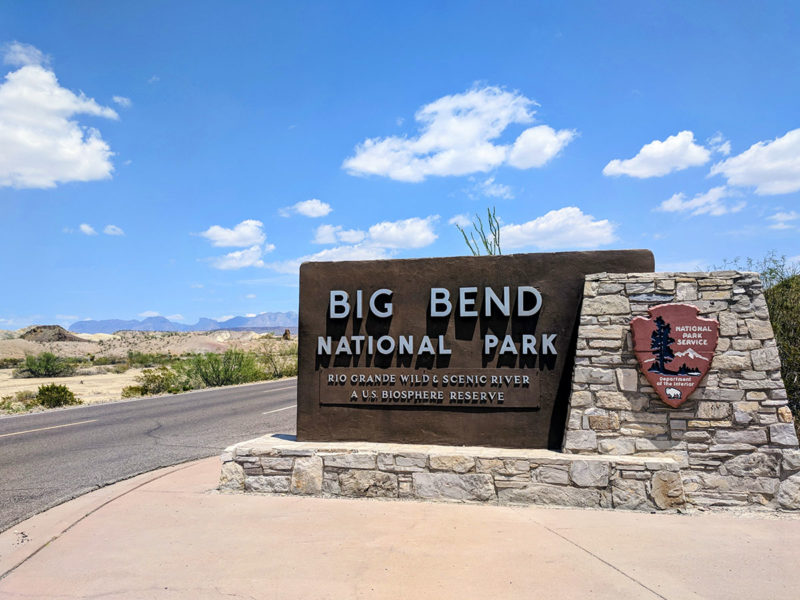

Hi Lori!
This was a well written and informative article on Death Valley. You pretty much covered all that there is, but I would like to add one thing. I work for Xantera as an outside electrical contractor and recently upgraded their electric vehicle car chargers at the Inn and the Ranch parking lots in Furnace Creek. You will find 2, two port chargers at the Ranch near the ice cream shop and 1, two port charger at the Inn near the entrance to the tunnel. These new chargers are part of the Blink Charging Network and each port is configured for 32 amps (40 amp, 2 pole breaker). I hope this helps some of your readers! Thanks for sharing Lori.
Sincerely,
Jason
Oh wow thank you so much Jason! This is very helpful information to include. I really appreciate you reaching out to let me know.